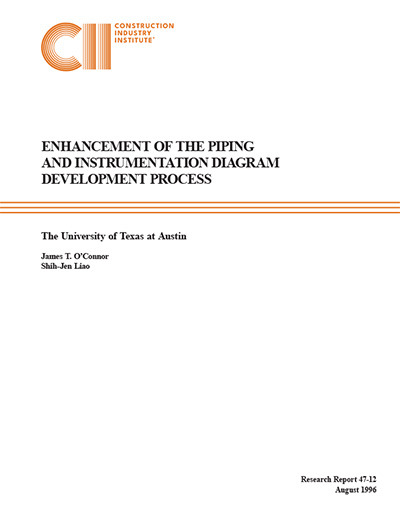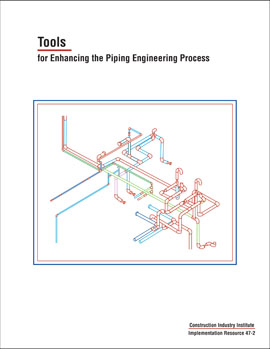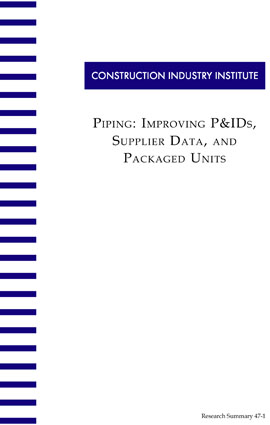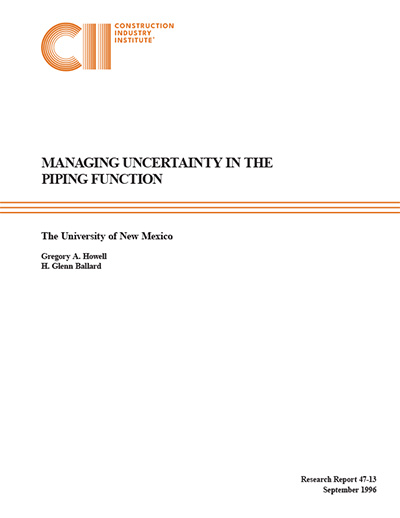
Enhancement of the Piping and Instrumentation Diagram Development Process
The development process of piping and instrumentation diagrams (P&IDs) is inefficient and problematic. The symptoms of this inefficiency have been recognized by the industry leaders as artificially frozen P&IDs and late P&ID changes. The researchers conducted two phases of personal interviews with industry experts to identify problems and their sources, and to collect best practices. In the first phase of interviews, influential factors, P&ID information elements, P&ID development stages, key players of the P&ID development, and four key drivers of the symptoms were identified. The four drivers were lack of sequencing and prioritization, inefficient P&ID development and review procedures, inefficient P&ID communication of uncertainties, and failure to incorporate lessons learned into new projects.
The second phase of interviews resulted in best practices and many useful solution tools. Of the 11 tools developed, six were identified with a higher priority than the others for implementation. These were selected for formal validation in order to examine their usefulness. The six validated tools were P&ID development flowchart, P&ID review checklist, solutions for avoiding artificially frozen P&IDs, responsibility assignment chart, communication tools for “Holds,” and lessons learned from case studies. The validation results showed that these six tools could have high positive impacts on projects and, with some minor modifications, could all be easy to implement.



